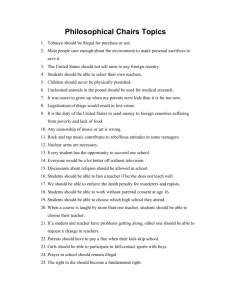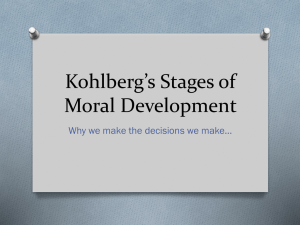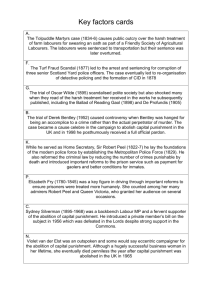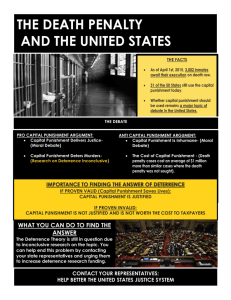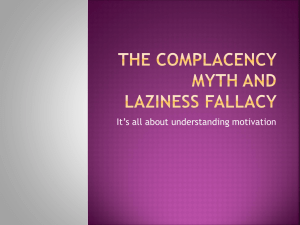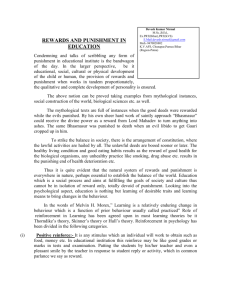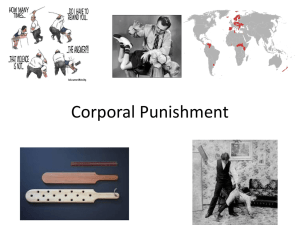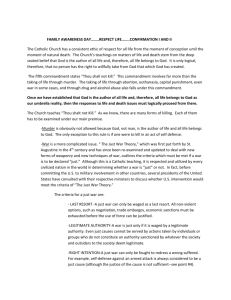Chapter 11 PP ED 506 - andrea-thomas
advertisement
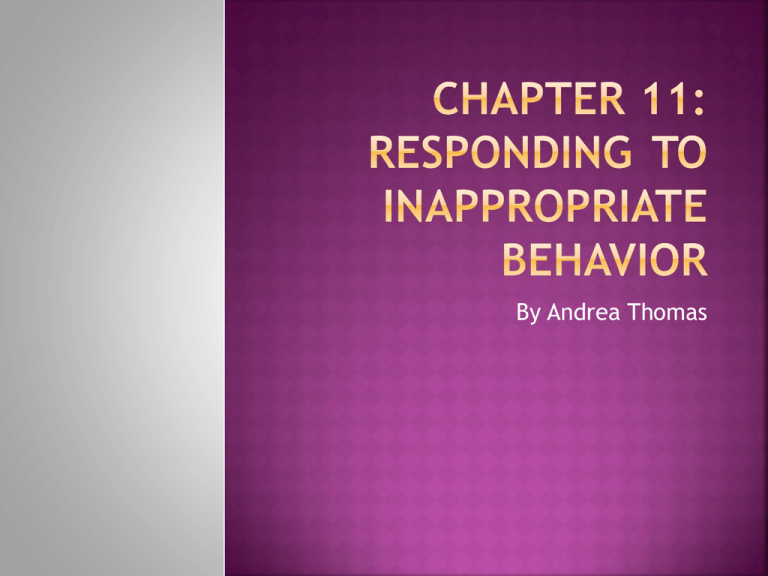
By Andrea Thomas The teacher must know who is misbehaving, what the misbehavior is, and when it occurs. Never jump to conclusions when an incident involves a student who has a history of behavior problems. Always clarify the problem with the student before considering possible interventions. -- states that when dealing with routine classroom behavior, misbehaviors should be corrected with the simplest, least intrusive intervention that will work and gradually becomes more intrusive if the least intervention does not work. This is to help keep the lesson going while handling the misbehavior. STEP 1: SITUATIONAL ASSISTANCE Remove Distracting Objects Provide Support with Routines Reinforce Appropriate behavior Boost Student Interest Provide Cues Help Students over Hurdles Alter the Lesson Provide Non-punitive Time-Out Modify the Classroom Environment Redirect the Behavior STEP 2: MILD RESPONSES Ignore the Behavior Use Nonverbal Signals Stand Near the Student Touch the Student Call on the Student During the Lesson Use Humor Send and I-Message Use Positive Phrasing Remind Students of the Rules Give Students Choices Ask “What Should You Be Doing?” Give a Verbal Reprimand STEP 3: MODERATE RESPONSES Withdraw Privileges Change the Seat Assignment Have the Student Write a Reflection on the Problem Place the Student in Time-Out Hold the Student for Detention Contact the Family Have the Student Visit the Principal • Tattling • Clowning • Cheating • Lying • Stealing • Profanity • Rudeness Toward the Teacher • Defiance or Hostility Toward the Teacher • Failure to Do Work in Class or Homework Discuss and Reward Acceptable Behavior Clearly Specify the Behaviors That Will Lead to Punishment Use Punishment Only When Rewards or Non-punitive Interventions Have Not Worked, or If the Behavior Must be Decrease Quickly Administer Punishment in a Calm, Unemotional Manner Deliver a Warning Before Punishment is Applied Apply Punishment Fairly to Everyone Who Exhibits the Target Behavior Apply Punishment Consistently Use Punishment of Sufficient Intensity Select a Punishment That is Effective and Fit the Situation Avoid Extended Periods of Punishment Harsh Reprimands Threats Nagging Forced Apologies Sarcastic Remarks Group Punishment Assigning Extra Academic Work Reducing Grades Writing as Punishment Physical Labor or Exercise Corporal Punishment Burden, Paul R. (2010) Classroom Management: Creating A Successful K-12 Learning Community. Fourth Ed. John Wiley and Sons, Inc.

